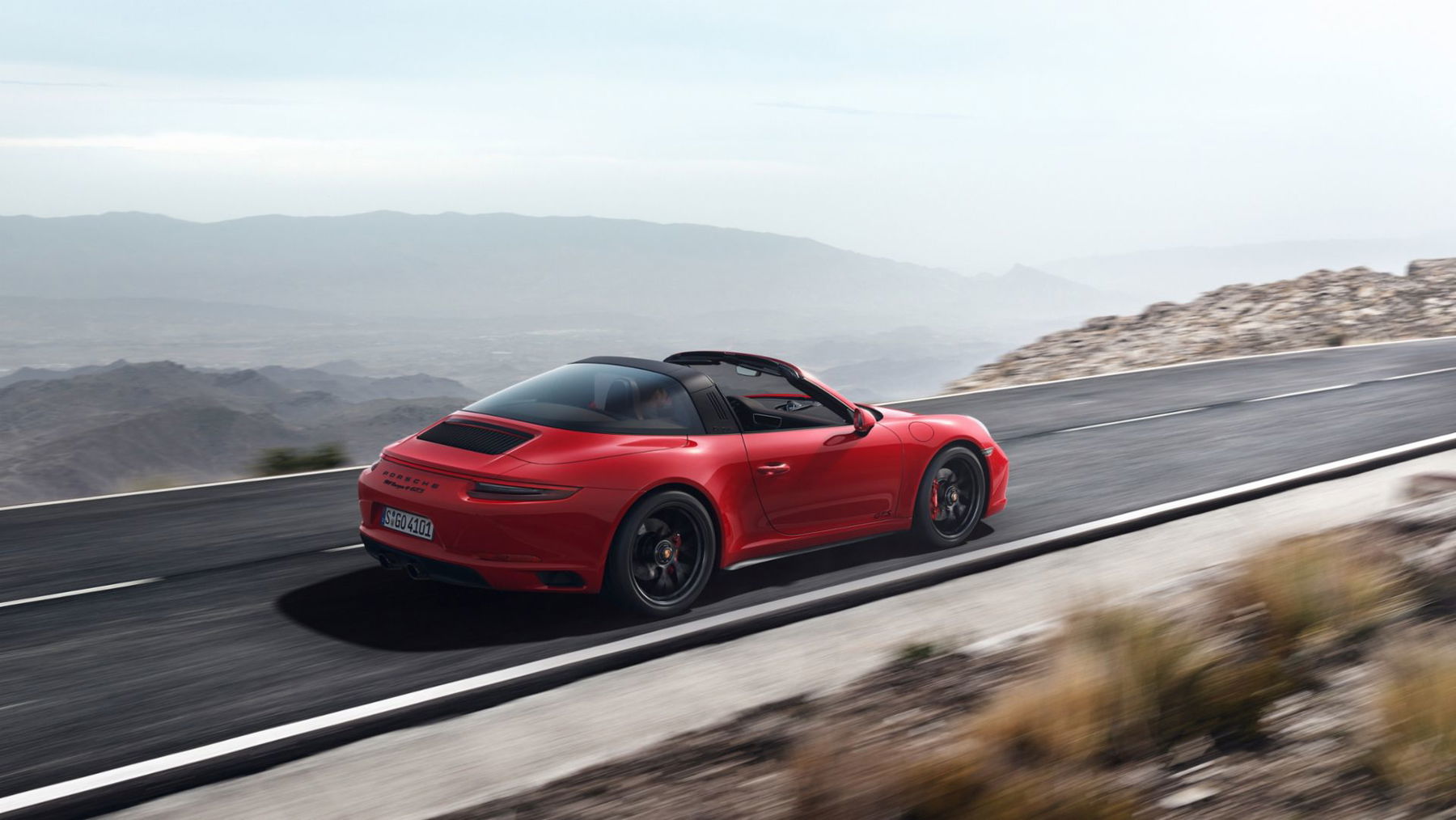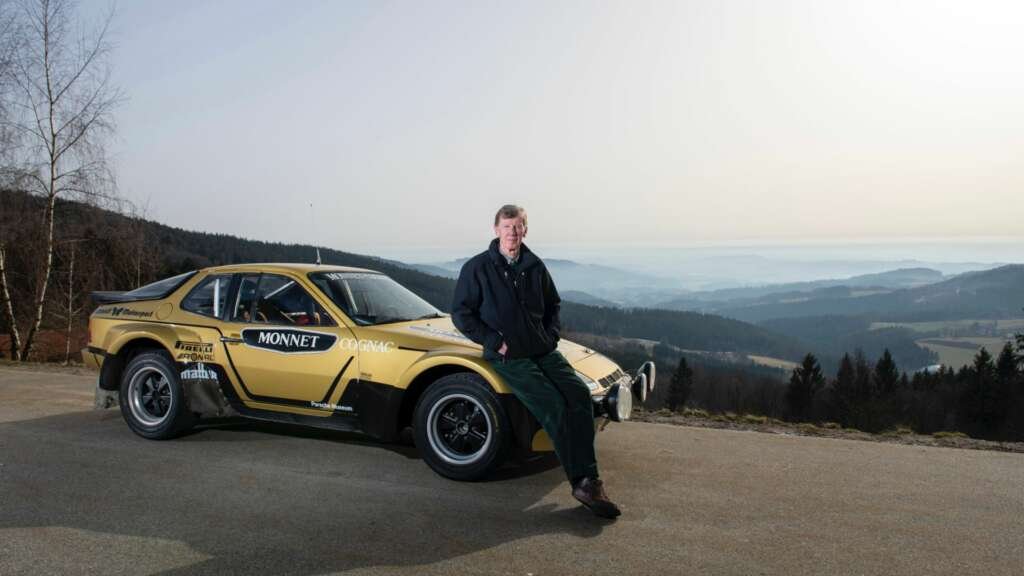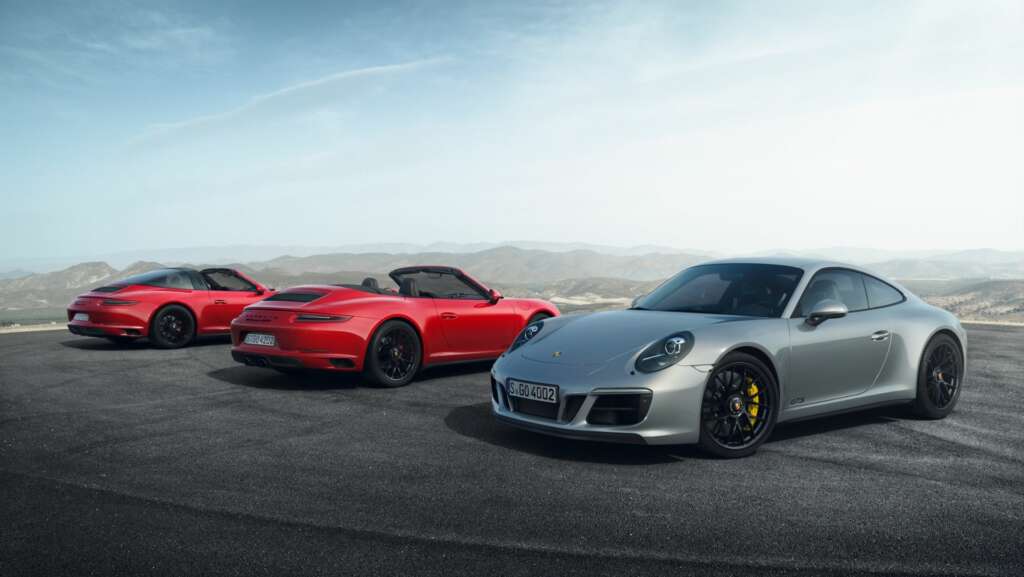
The Porsche GTS models are something like the thinking man’s GT3 within the brands’ lineup. They combine more sportiness without sacrificing too much everyday practicality or creature comforts. But what does Porsche GTS stand for? Where are its origins and why has it become a thing in the first place? What makes them so special? Why are certain GTS models already regarded as future classics?
Since 1963 the GTS badge is part of the Porsche Code. The breathtakingly beautiful Porsche 904 Carrera GTS was a street-legal, mid-engined racing car. GTS itself is an acronym for Gran Turismo Sport. The first GTS Porsche was an instant hit. Not only did it win the legendary Targa Florio in its first outing in 1964, but a year later the Carrera GTS dominated the German Automobile Circuit Championship at will, winning eight of eleven races. The legend of the Porsche GTS was born.
It was not until 1981 that the next Porsche received the three letters. The Porsche 924 Carrera GTS (known as the 937 internally) was designed as a racing car for private use. It was based on the 924 Carrera GT and built according to Group 4 regulations. The vehicles could be road-legalized by individual approval. This Porsche GTS became famous through its use as a rally car. Walter Rörhl completed several rallies in the gold and black transaxle and took a few overall victories at national events in 1981.

In 1992, Porsche embarked on a new path. From then on, the Gran Turismo Sport models were to be sportier production vehicles, rather than more civilian racing cars. From this approach came the Porsche 928 GTS. Its 5.4-liter V8 engine delivered 350 hp and helped the 1.6-ton GT achieve remarkable performance. 5.7 seconds from 0 – 62 mph and 171 mph top speed stood to book.
The first Porsche GTS designed solely for the road also had a few visual treats to offer. Its rear end became wider and was given a continuous red taillight. A rear wing, Cup wheels, sports suspension and improved brakes rounded out the package. Of course, this didn’t turn the 928 into a race car. But as a GTS, it was the sharpened street variant it was meant to be. Not quite as comfortable as it was in the ’80s.
After the GTS badge was then rejuvenated with the Cayenne in 2007, the first 911 with the magic three letters was launched in 2010. The Porsche 997.2 Carrera GTS received the wide all-wheel-drive body, regardless of the drivetrain, a black spoiler lip and centerlock wheels. In addition, the 3.8-liter DFI engine received a performance upgrade. It now produced 408 hp, so it matched the 993 Turbo‘s ouput on the dot. This performance capability brought it dangerously close to the GT3 under acceleration with the optional PDK. With a 0 – 62 mph time of 4.2 seconds, it is only a tenth of a second slower than its more track-focussed sibling.
Despite its truly impressive performance, however, the GTS was not an immature racer. Instead, it was still a very usable and comfortable everyday car. And that’s exactly what customers wanted – a somewhat sharpened 911 with a naturally aspirated engine and a sporty appearance, without sacrificing too much comfort. It closed the gap between the Carrera S and the GT3 and, unlike its track-focussed siblings, was also available as a cabriolet and with all-wheel drive. At that time, a Targa was (unfortunately) not yet available as a GTS. At the same time, it was the first rear-wheel-drive Porsche 911 Carrera with the wider body. And the first Porsche 911 Carrera GTS was so successful, that a sequel was the logical consequence.
In the 7th generation 911, the GTS, offered from 2014, was also available as a Targa for the first time. 430 hp, 7-speed manual transmission or optional PDK and a rapid 4.0 seconds from 0 – 62 mph with PDK were the facts. Just as with the 997, ne 991 GTS got the wide body, no matter if its rear-wheel or all-wheel drive. Centerlock wheels meanwhile, had become just as established as black applications and headlight inlays. There was also a 10 mm lower sports suspension with PASM, the Sport Chrono package with sports exhaust system and Porsche Torque Vectoring. When new, the GTS models were less expensive than a correspondingly equipped Carrerra S. So, they’ve been sort of a bargain. As mentioned elswhere, especially the Porsche 991.1 Carrera GTS is already an upcoming classic. Since it is the last and most powerful naturally aspirated iteraiton of the 911 Carrera.
The Porsche 991.2 Carrera GTS was so good on track, it almost rendered the GT3 pointless. Nevertheless, the spread between sport and comfort is so good, that a comparably equipped Carrera S can do no better in everyday driving. With the 991.2 GTS, Porsche cemented the GTS’ reputation, of being the best of Carrera S and GT3, combining all the performance advantages, without sacrificing comfort.
With the 991.2 Porsche introduced new engines. 3 liter boxer engines with turbocharging were now common to all Carreras. 450 hp and a whopping 550 NM, instead of the previous 440, trumpet out of the GTS’s beautiful, now center-mounted dual exhaust system. While the previous Porsche 911 GTS’ performance was closer to the Carrera than the GT3, that changed massively with the 991.2. In the Sport Auto test at the Hockenheimring, the Porsche 991.2 Carrera GTS was the fastest production 911 ever tested at the time. The PCCB brakes also set records, outperforming even the 918 Spyder, stopping within 30 meters from 62 mph. Although the 991.1 GTS is certainly the more emotional car due to its naturally aspirated engine, the 991.2 GTS is objectively significantly better. What’s more, with its centrally mounted exhaust system, it simply looks sexy – especially as a Targa 4 GTS!

It’s no surprise, that there is an increased demand for these extremely well-balanced Zuffenhausen compositions. Whenever a Porsche wears the GTS badge, it is a true best of album. Some even considered them as GT models for connoisseurs. They are built for those who would like to enjoy more performance than the S, but shy away from the GT3/4. If you look at Boxster/Cayman generation 981 for example, the GTS is not only the most desirable car of the whole range for many, but also the most stable in value next to the GT4. Not even 20% of depreciation after up to seven years of age speaks for itself.
As such, it can be seen as a blueprint for all other GTS Porsches. No wonder, because the GTS combines everything that makes the respective car more emotional: Sport Chrono Package with sports exhaust system, more power, better suspension and a little makeup in the right places. Of course, the mighty 480 hp Porsche 992 GTS and the even more powerful Taycan GTS with its 598 hp are no exception. However, when looking at the 992 GTS values in particular, one must emphasize the current special position of the 991.1 Carrera GTS, being the last Carrera with a naturally aspirated engine.

Over the years, the Gran Turismo Sport has established itself at Porsche’s whole lineup. Whether Panamera, Cayenne, Boxster, Cayman, Macan, Taycan or 911, they all have their GTS. Initially, it was proclaimed somewhat contemptuously that it was just a discounted way to get a lot of otherwise expensive optional equipment. But as so often in Porsche’s history, the effect achieved is well above what the sum of the individual parts would suggest. Looks, power, performance and emotion are all elevated to a new level with each GTS. So it’s no surprise that these vehicles offer a somewhat more stable value than their S-labelled siblings. And they are in particularly high demand on the used market as well.
Originally, the Gran Turismo Sport epithet was meant to denote more user-friendly race cars. This mantra has been reversed over the decades. Today, Porsches with the GTS badge tend to be sportier editions of its regular production models. They are sportier than the base versions, but not as focused and raw as the GT or as powerful as the Turbos. Porsche calls it “An extra dose of sportiness with the same outstanding level of comfort“. This is certainly a little optimistic in terms of comfort, but it gets to the heart of the matter.
Since the 991.2 at the latest, it is fair to say that the GTS models occupy a special position within their respective models. They really do combine the most sought-after, otherwise optional extras with wonderful exterior details and a subtle performance upgrade. At Porsche, GTS stands for the best possible combination and configuration of its model, if you disregard the Turbo and GT models. Simply a true best of.
© header: Porsche AG
Elferspot magazine